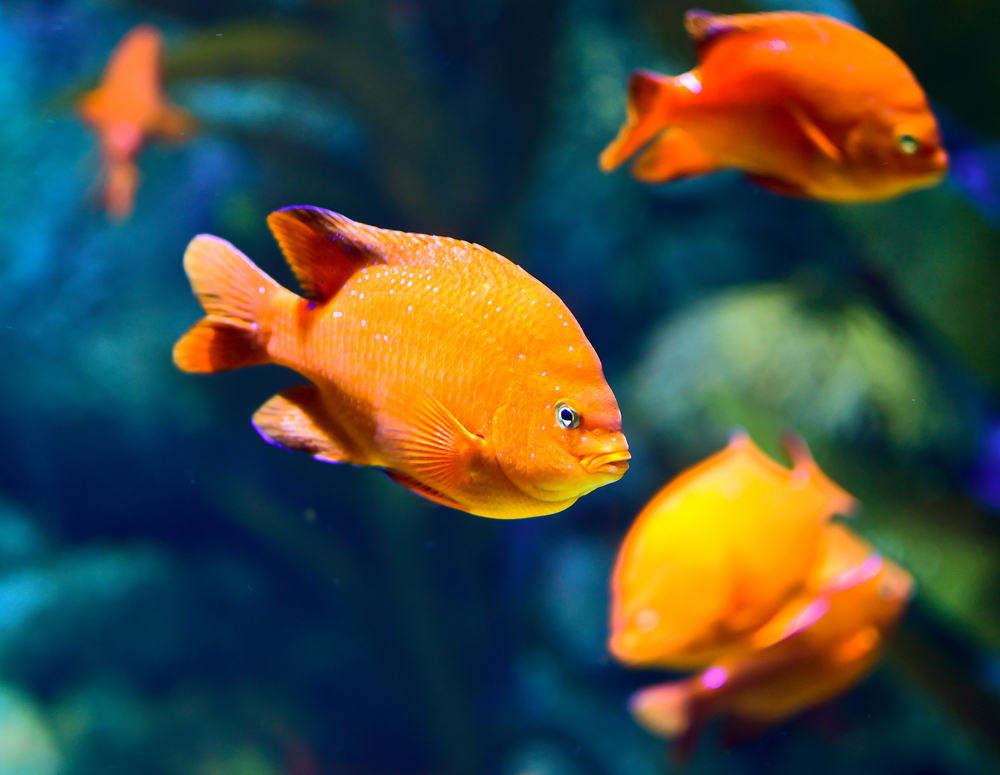Top 10 Animals to Look for in La Jolla
Going for a scuba dive in La Jolla makes for an unforgettable adventure. But the dive itself isn’t the only fun there is. There are lots of gorgeous animals you can see while scuba diving! This blog will go over the top 10 animals to look for in La Jolla.
1. Giant Black Sea Bass
The Giant Black Sea Bass is a unique species to look forward to seeing at your next scuba adventure in La Jolla. The bulky, robust fish has a large mouth, small teeth, and a distinctive single, strongly-notched dorsal fin. They are known for their extraordinary size which can grow to be over 7 feet long and weigh over 700 pounds!
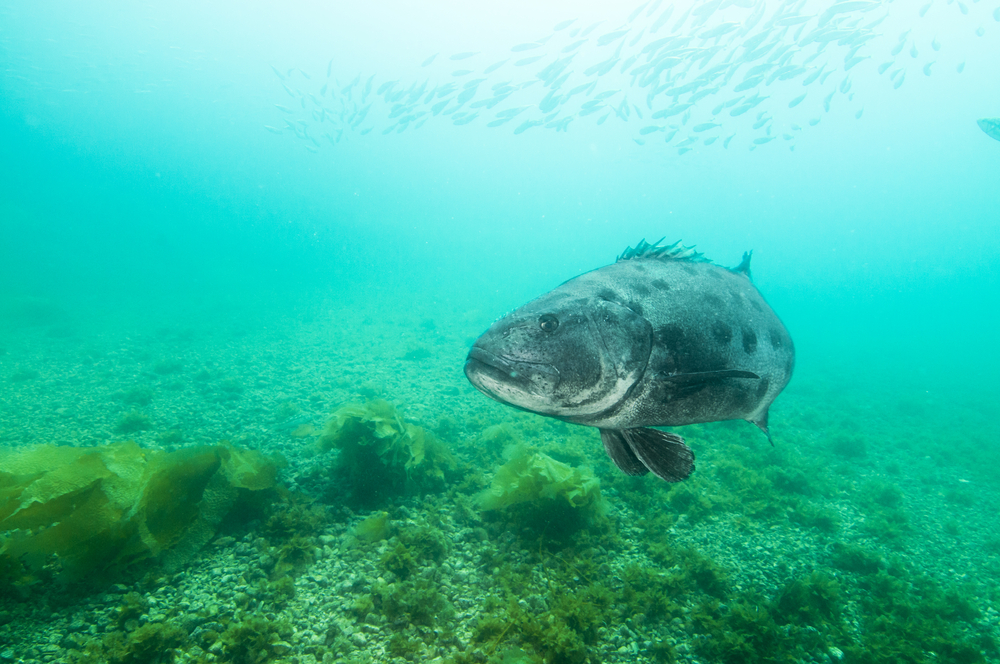
2. Harbor Seals
Harbor seals are one of the most common marine mammals along the U.S. West Coast. They are commonly seen resting on rocks and beaches along the coast with their head and rear flippers elevated in a “banana-like” position. Harbor seals can weigh up to 285 pounds and measure up to 6 feet in length.
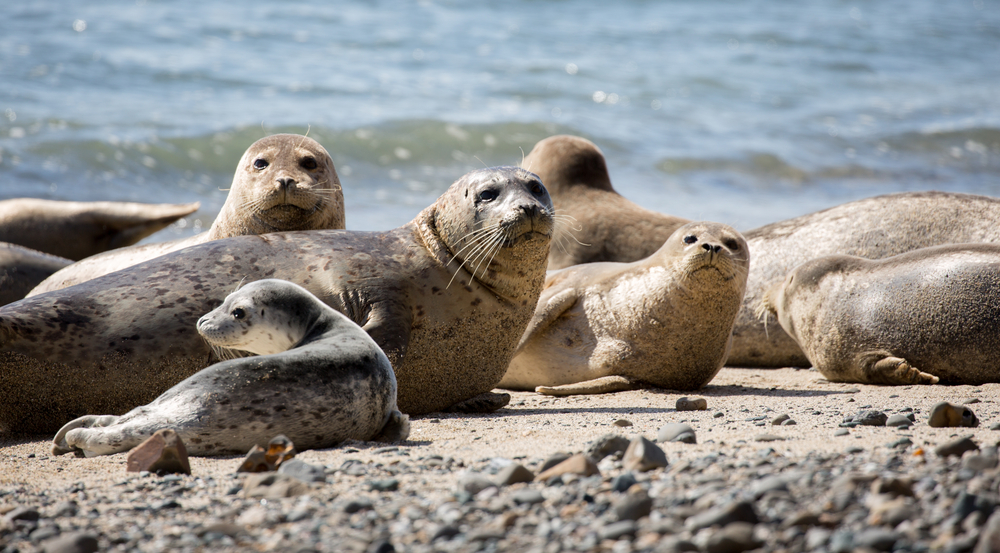
3. California Sea Lions
California Sea Lions can usually be seen on the beach and rocks next to the ocean, resting and soaking up the sun. When these powerful swimmers get in the ocean, they usually hunt for fish and squid. Sometimes confused with seals, a sea lion has external ear flaps and can rotate its back flippers underneath its body to walk or run on land.
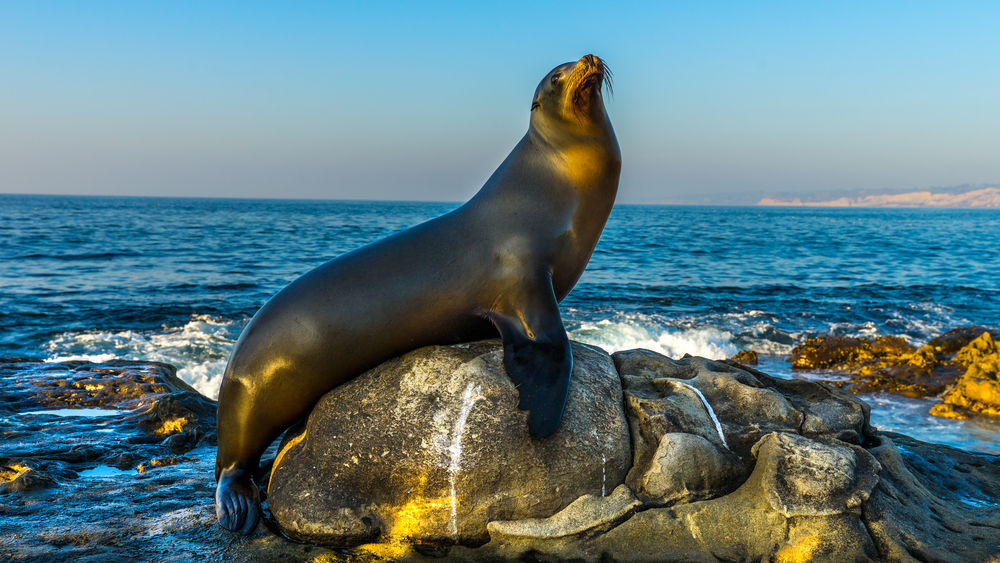
4. Leopard Sharks
Leopard sharks are one of the most common sharks along the coast of California. They’re beautiful, slender fish with silvery-bronze skin that’s patterned with dark ovals that stretch in a neat row across their back. Don’t worry; they’re harmless! These sharks can grow to more than five feet long and come to the shallow waters in La Jolla. A fun fact of Leopard Sharks is that the only place in the world that leopard sharks have been observed mating is in La Jolla!
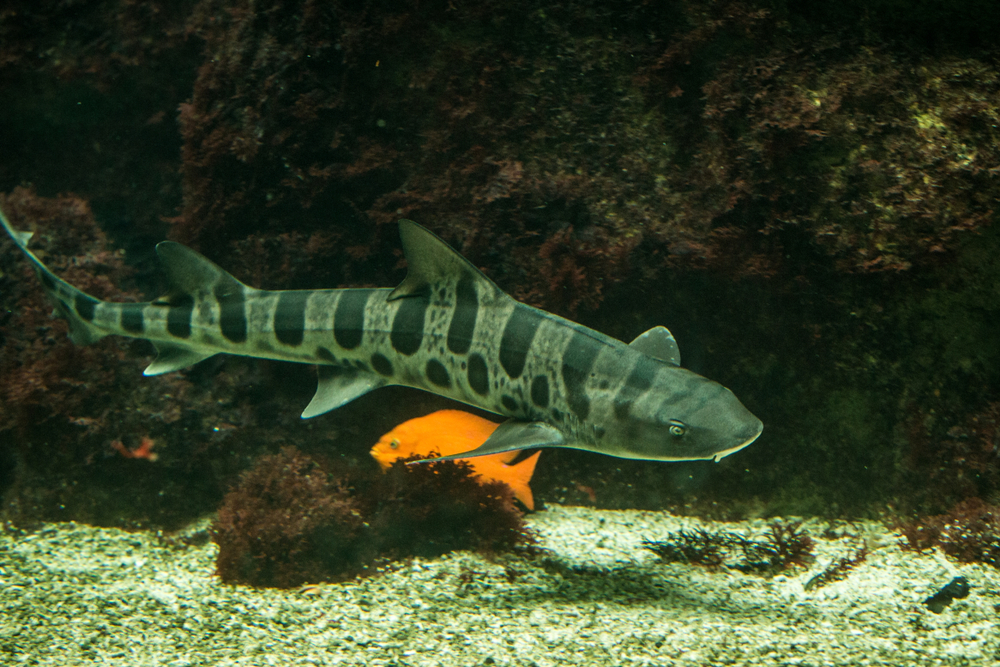
5. Horn Shark
Horn Sharks are generally slow-moving, solitary predators that hunt at night. They have a short, broad head with a blunt snout and prominent supraorbital ridges over the eyes. The horn shark is a sporadic swimmer that prefers to use its flexible, muscular pectoral fins to push itself along the bottom. 95% of the adult horn shark’s diet consists of hard-shelled mollusks, echinoderms (e.g., sea urchins), and crustaceans (e.g., crabs and shrimp).
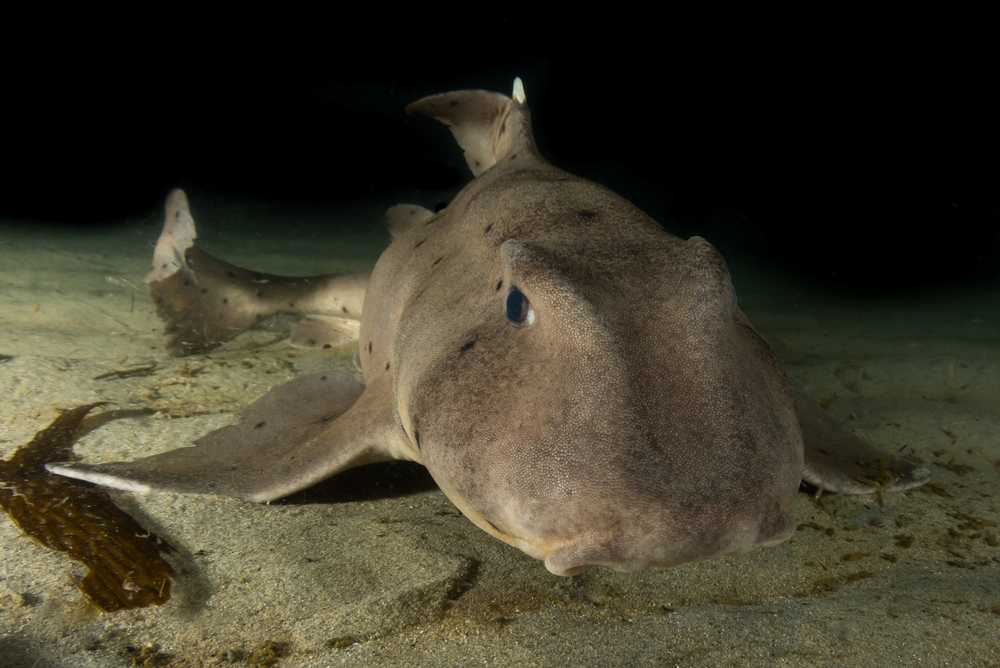
6. Guitar Fish
The guitarfish are a family of rays. They are known for an elongated body with a flattened head and trunk and small ray-like wings. They bury themselves in mud or sand to eat worms, crabs, and clams. Their tail has a typical shark-like form and their head has a guitar-like shape.
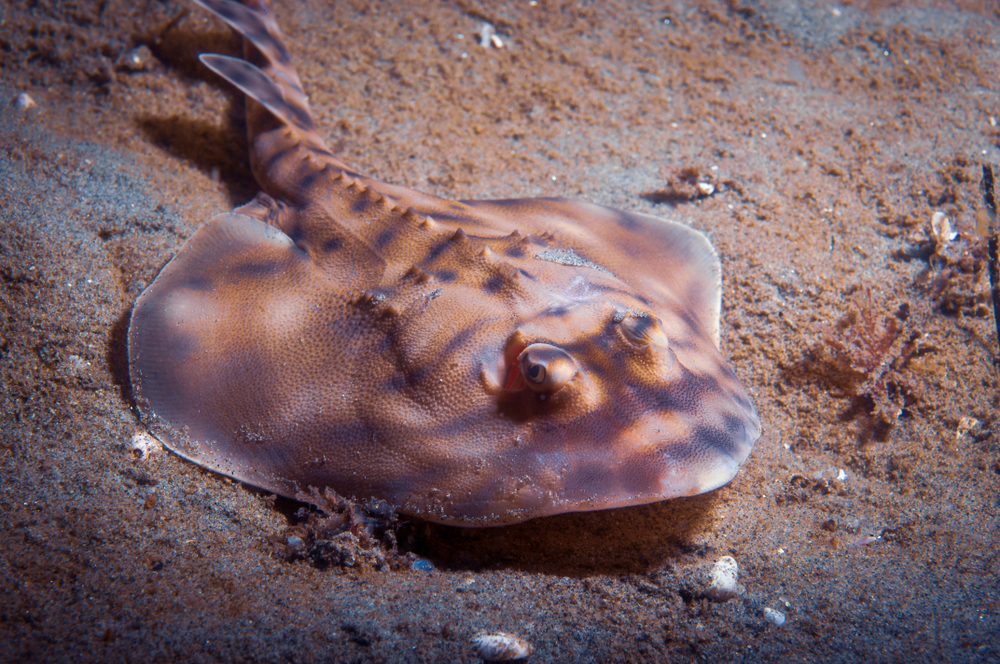
7. California Spiny Lobster
The California spiny lobster is a species of spiny lobster found in the eastern Pacific Ocean from Monterey Bay, California, to the Gulf of Tehuantepec, México. They typically grow to a length of 30 cm and are a reddish-brown color with stripes along the legs. They have a pair of enlarged antennae, but no claws.
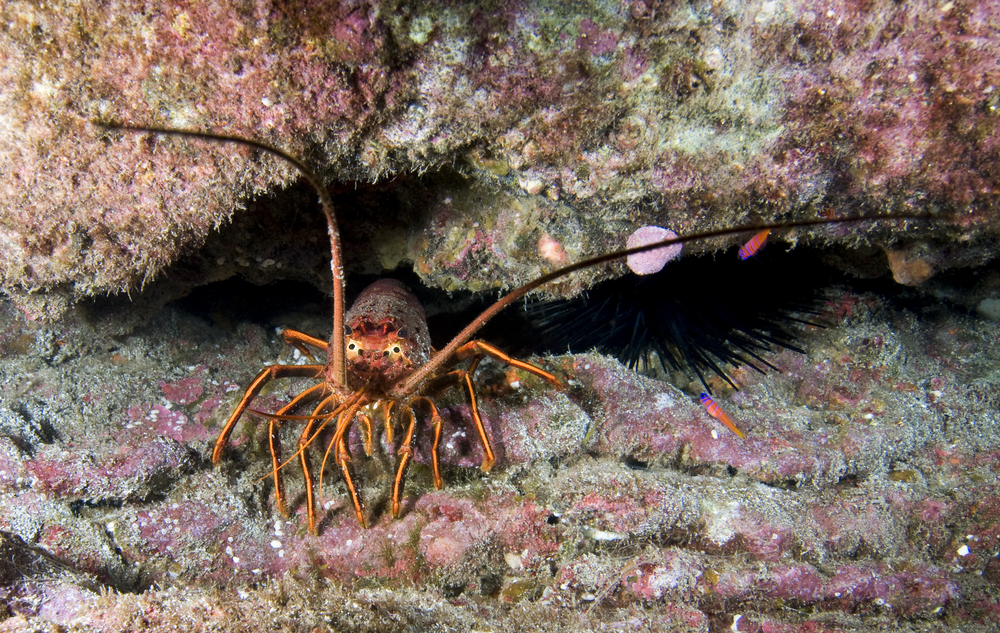
8. Sheep Crabs
Sheep crabs have an oval-shaped body covered with spines and bumps. It is the largest species in the family of California spider crabs that has long, crawling legs and big, knobby joints. Male sheep crabs can grow up to 17 cm (6.5 inches), and females can grow up to 11 cm (4.5 inches). This crab is found from Point Reyes, California to Baja California, México.
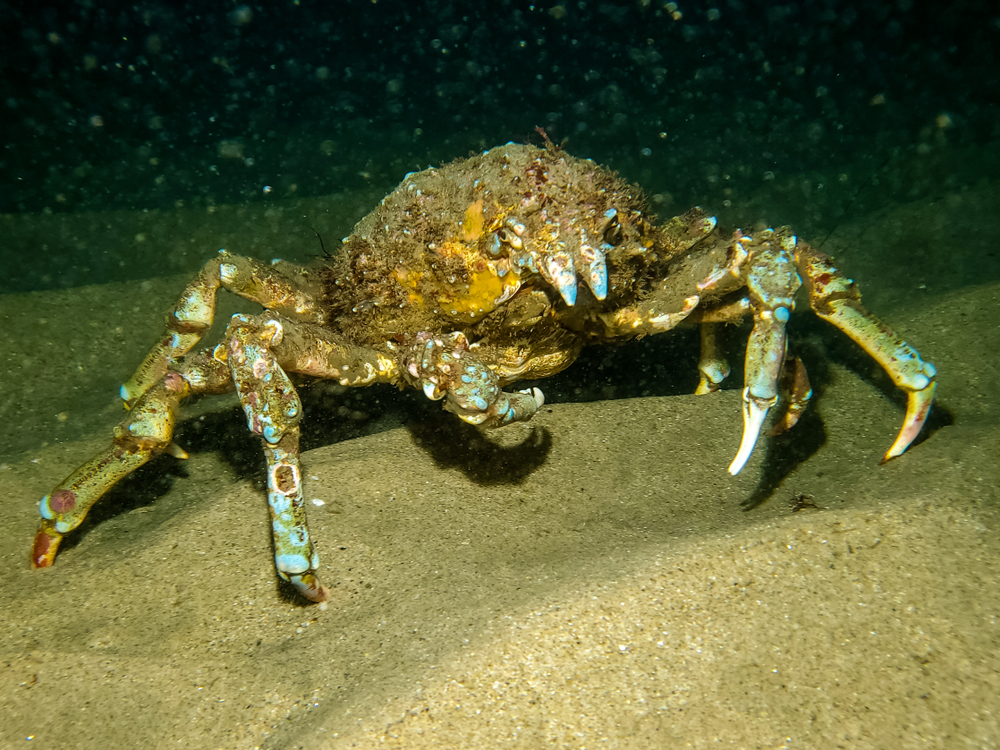
9. Garibaldi
Garibaldi, which is California’s state fish, is one of the easiest sea animals to spot while diving in La Jolla. They’re easy to recognize with their bright orange color. They easily stand out against green algae and seaweed. They feed on small invertebrates such as anemones, worms, and shrimp.

10. Broadnose Sevengill Shark
As its name suggests, sevengill sharks have a pair of seven gills. Most sharks normally have five gills. Their backs and sides are reddish-brown to silvery gray and are speckled with many small black spots. Although the broadnose sevengill is a powerful swimmer that can be aggressive if provoked, there is no record of humans being attacked in open water by them. These sharks can grow to be up to 10 feet long.

The number of different animals you can see while diving at La Jolla is immeasurable. You can always witness new animals on every dive you have there. We hope this blog helps you get an idea of what animals to look forward to seeing at your next scuba dive at La Jolla. To book your SCUBA or Snorkel tour, click here or call 1-858-397-8213.
Happy diving!


